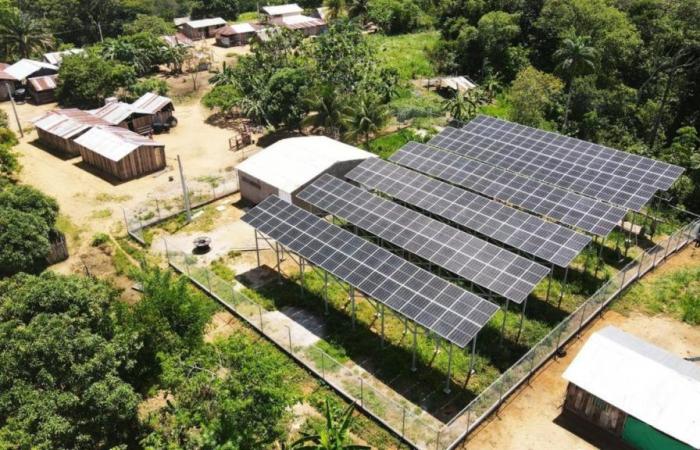ANDThe Colombian government has made progress in its strategy to democratize access to energy with the delivery of three Energy Communities in the department of Guainía. This project, implemented by the Ministry of Mines and Energy in collaboration with the Institute for Planning and Promotion of Energy Solutions (IPSE), seeks to provide 24/7 electric power service to communities that previously lacked continuous access.
The technical specifications of each project have been adapted to the specific needs of each territory. In Chatare, a 70.87 kWp hybrid generation plant has been installed, with 175 solar panels, 48 4710Ah batteries, a 18 Kw diesel backup and 209 solar systems photovoltaics for the dispersed population.
Carpintero has a 87.48 kWp plant, 216 solar panels, 72 4710 Ah batteries, a 29 kW diesel backup and 35 individual solar systems. For its part, Venado has received a 61.96 kWp plant, with 153 solar panels, 48 4220 Ah batteries, an 18 kW diesel backup and four individual solar systems. In total, the project involves the installation of 544 solar panels with a hybrid generation of 220.31 kWp.
You may also be interested in: All defendants acquitted in the ‘Panama Papers’ case
The Minister of Mines and Energy, Andrés Camacho, has highlighted the innovative nature of these Energy Communities, pointing out their dual purpose: “Today we deliver these three agrovoltaic Energy Communities that have a dual purpose: They generate photovoltaic energy and also serve as vegetable gardens for agricultural production”.
Camacho emphasized that this delivery is carried out in indigenous reservations, underlining the government’s commitment to the most vulnerable and remote communities. The minister also highlighted that this initiative is part of a broader strategy that began in October 2023 and is beginning to materialize in the territories.
Innovation in the design of these Energy Communities goes beyond the mere provision of electricity. Danny Ramírez, director of IPSE, explained that the project has been designed to adapt to the social, cultural and economic dynamics of the Non-Interconnected Zones.
“In Chatare, Carpintero and Venado, through an innovative system, we build hybrid agrovoltaic power plants. This means that, thanks to the elevated solar panel structure design, in addition to generating continuous energy, it provides the opportunity to use the land for development of productive activities of the community”, Ramirez said.


